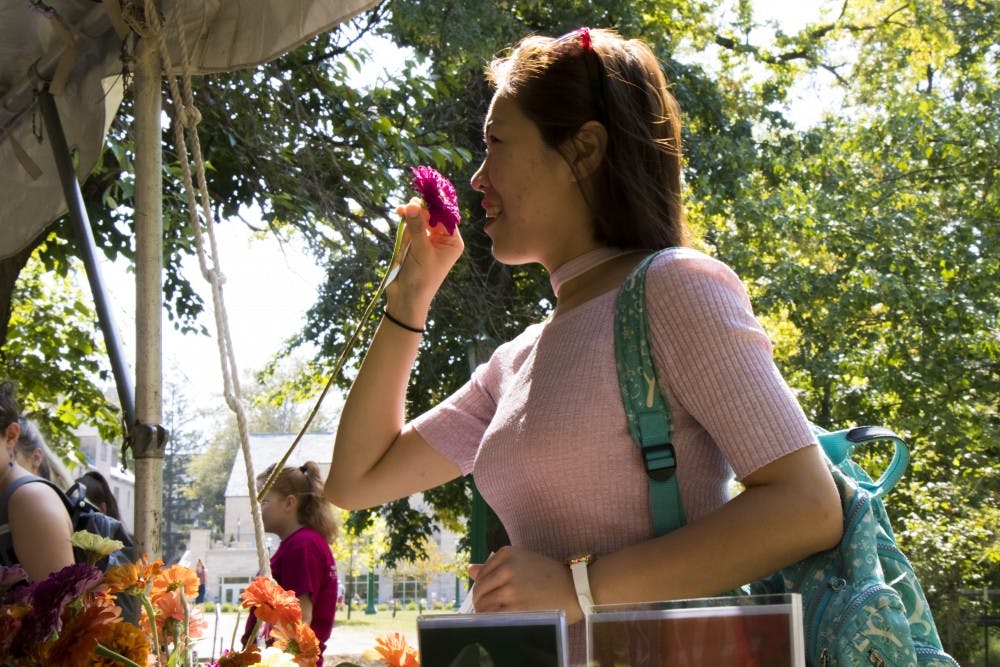Peering through the trees surrounding Conrad Prebys Amphitheater were three large tents in IU colors: two red and one white. Those walking past couldn’t miss the cacophony of volunteers hustling to set up tables and prepare food for the day.
IU’s annual food sustainability festival, Big Red Eats Green, took place from 11 a.m. to 3 p.m. Sept. 19. BREG has been an annual event for at least the past five years.
The festival included five local vendors including Fisher Farms, which supplies most of the meat for campus, and Heartland Family Farm, which provides produce for IU.
The vendors supplied their food for Chef David Tallent, the executive chef of IU’s Dining and Catering services, to prepare three different dishes that passersby could purchase using I-Bucks, credit or debit cards.
The large, white tent was the focal point of the festival, housing nine black tables for each vendor or organization. One table had bananas stretched across its top and a banana costume hanging from the tent. This table was Fair Trade at IU’s way of showing off their donated and fair-trade bananas from Bloomingfoods.
Another table was set aside for the IU Food Project, an organization geared toward educating undergraduates about food, IU junior Celeste Coughlin said.
“We teach you how to cook for yourself,” Coughlin said.
Participants were also given a Passport to Real Food, for which if they visited all five stations defining real food — locally and community-based, fair, ecologically sound, humane and disqualifier — they were given a free dessert.
Real food is food that is mostly unprocessed and free of chemicals such as genetic modifiers, red dye and high-fructose corn syrup. It also needs to nourish everything throughout all food systems.
IU junior Emma Schuster is an intern for Sustain IU and has been planning this year’s BREG since June. This year’s festival was the second of its kind in showcasing the benefits of sustainability and real food.
“Before (last year), it was more like a farmers market on campus,” Schuster said.
The shift from farmers market to featuring sustainability came when faculty members realized that students might benefit from seeing the behind-the-scenes of the campus’ food preparation and distribution, assistant director of Sustain IU Makayla Bonney said.
Bonney has been with Sustain IU for three years and helps track and calculate the percentage of how much real food is provided on campus. Last year, 7% of IU’s food was real food and 19% was sourced locally.
“IU has a commitment to sustainable food,” Bonney said.




